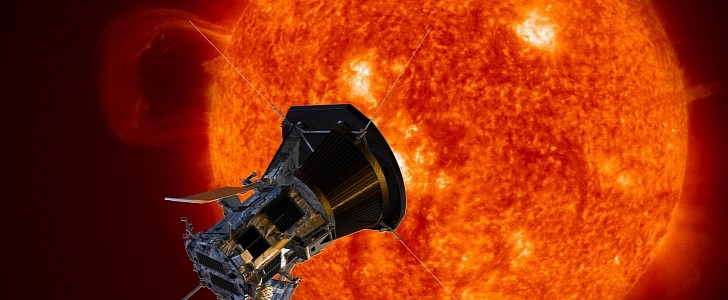The space agency sent the Parker Solar Probe to explore the Sun three years ago. During this time, the spacecraft has traveled closer and closer to this giant fireball, unfolding its mysteries. Now, it has finally dipped into its atmosphere and lived to tell the incredible story. The probe also made sure to gather crucial data before leaving the Sun for future, even closer, encounters.
Our star is a ball of hot plasma that has a superheated atmosphere. During its recent flyby, Parker passed through its upper atmosphere, also known as the corona, and found some incredible things.
Dipping into the corona, the probe was able to study the Alfvén critical surface, a point where the gravity is too weak to contain the solar material that forms the atmosphere. This is where the solar wind emerges from.
Scientists have believed that this Alfvén surface resembles a smooth ball. However, data taken by the spacecraft show that it has an irregular surface, with spikes and valleys. This discovery will allow researchers to understand more about the events that influence the Sun's atmosphere and solar wind.
But that's not all Parker has found out. The probe went in and out of the corona several times, and at some point, it even plunged 6.5 million miles (10.4 million km) from the Sun's surface. At that distance, it actually passed the Alfvén critical surface and entered the atmosphere, a place controlled by the magnetic field.
During its heated journey, Parker also discovered where switchbacks originate from. The switchbacks, as the name suggests, are rapid flips in the magnetic field that change direction in a zig-zag pattern. Until now, scientists were not sure where they formed, but they finally have the answer: the solar surface.
Parker made some incredible discoveries and will continue to unravel more mysteries as it gets closer to the Sun. The spacecraft will go further down this fireball, reaching a 3.8 million-mile (6.1 million-km) altitude from its surface. The next trip will be taking place next month and will see the probe jump into the Sun's corona once again.
The data taken by Parker will help scientists understand and predict extreme space weather events that might damage satellites and interrupt telecommunications and possibly even harm astronauts or hardware on future lunar trips.
Dipping into the corona, the probe was able to study the Alfvén critical surface, a point where the gravity is too weak to contain the solar material that forms the atmosphere. This is where the solar wind emerges from.
Scientists have believed that this Alfvén surface resembles a smooth ball. However, data taken by the spacecraft show that it has an irregular surface, with spikes and valleys. This discovery will allow researchers to understand more about the events that influence the Sun's atmosphere and solar wind.
But that's not all Parker has found out. The probe went in and out of the corona several times, and at some point, it even plunged 6.5 million miles (10.4 million km) from the Sun's surface. At that distance, it actually passed the Alfvén critical surface and entered the atmosphere, a place controlled by the magnetic field.
During its heated journey, Parker also discovered where switchbacks originate from. The switchbacks, as the name suggests, are rapid flips in the magnetic field that change direction in a zig-zag pattern. Until now, scientists were not sure where they formed, but they finally have the answer: the solar surface.
Parker made some incredible discoveries and will continue to unravel more mysteries as it gets closer to the Sun. The spacecraft will go further down this fireball, reaching a 3.8 million-mile (6.1 million-km) altitude from its surface. The next trip will be taking place next month and will see the probe jump into the Sun's corona once again.
The data taken by Parker will help scientists understand and predict extreme space weather events that might damage satellites and interrupt telecommunications and possibly even harm astronauts or hardware on future lunar trips.







